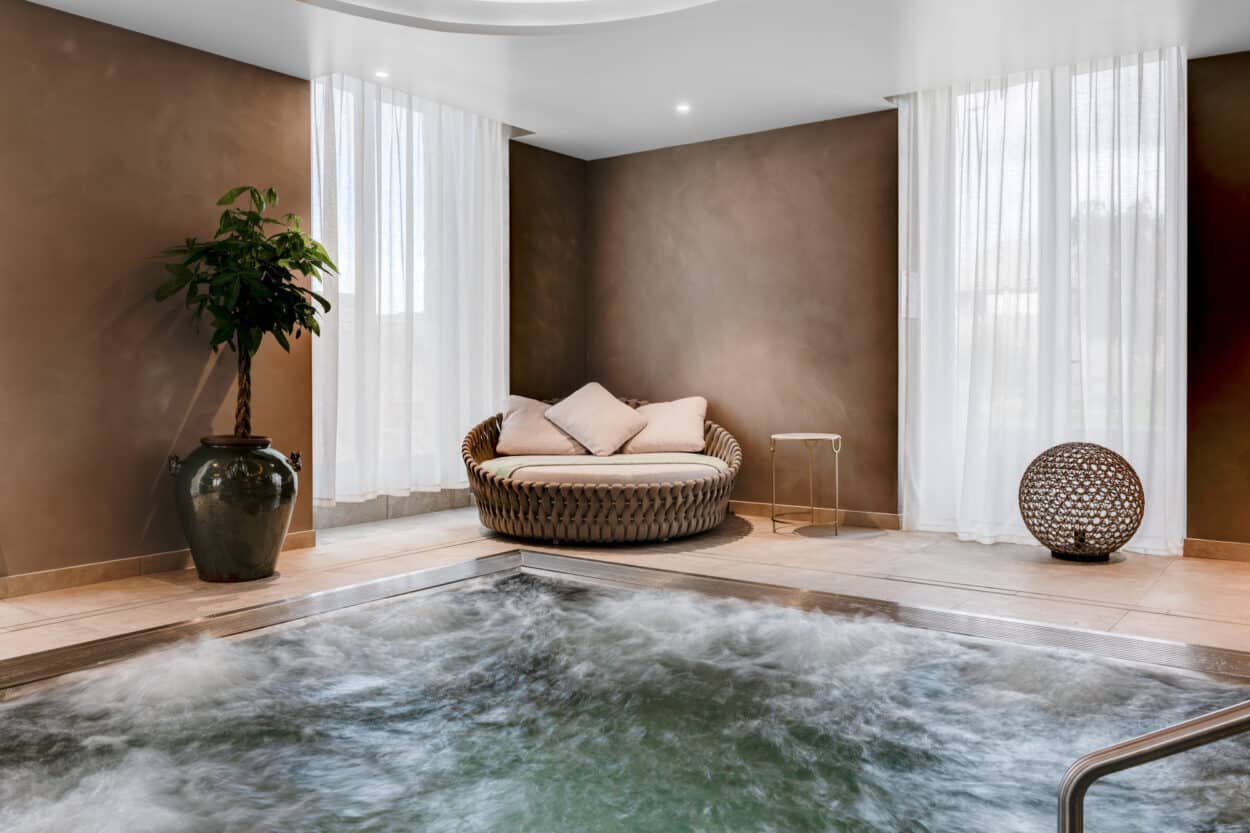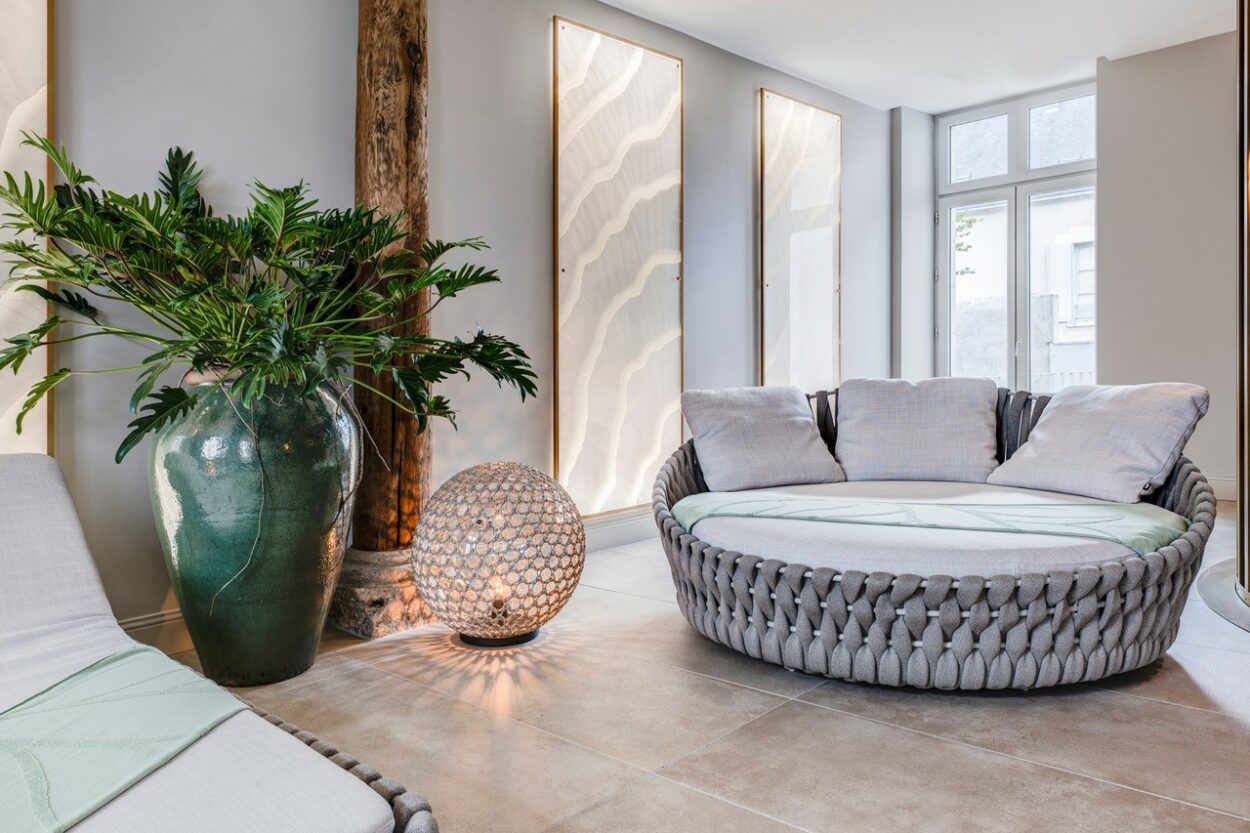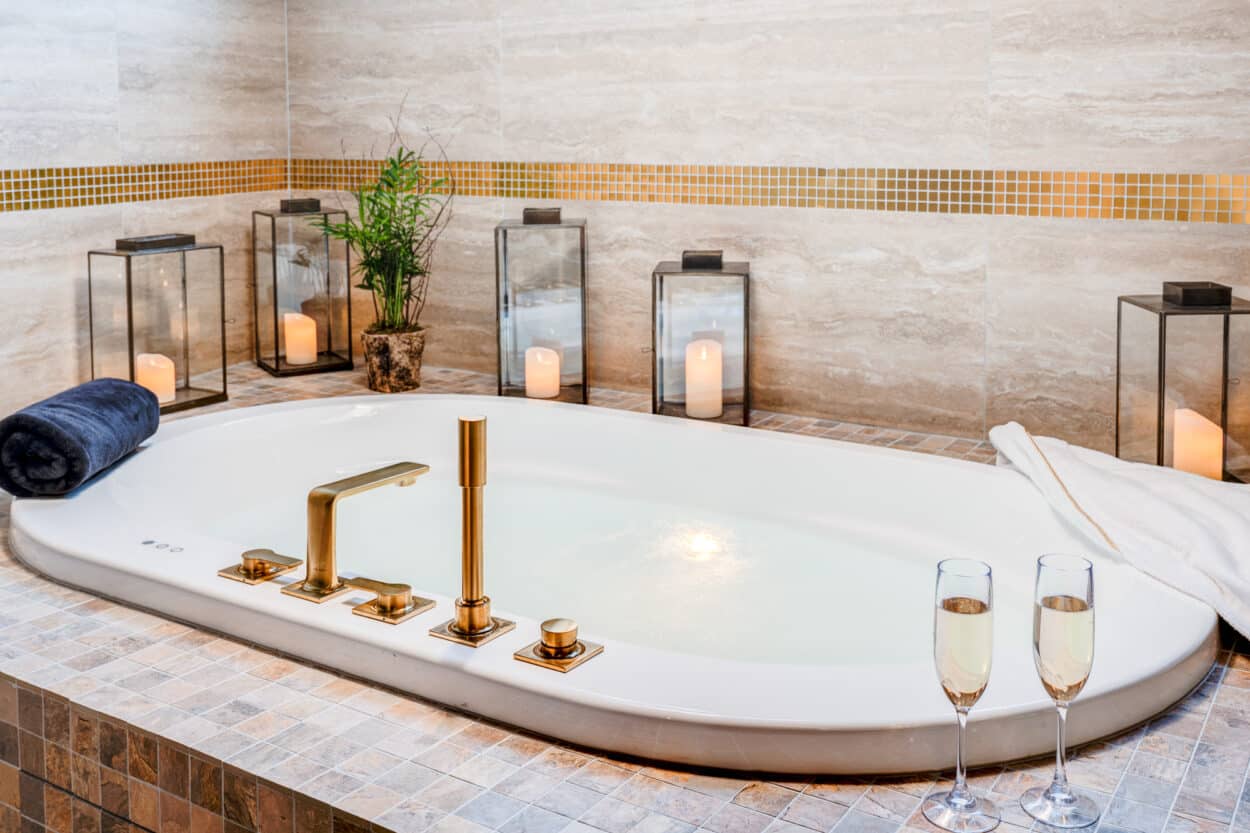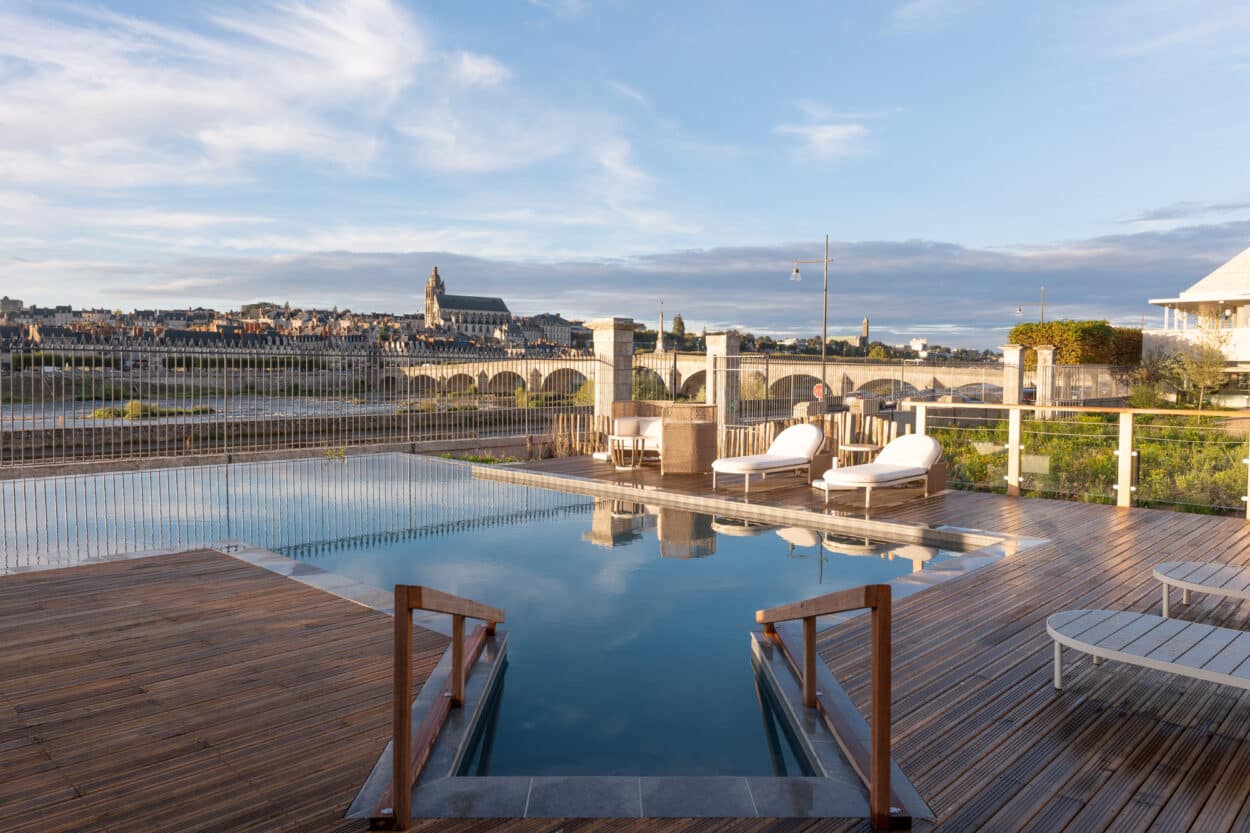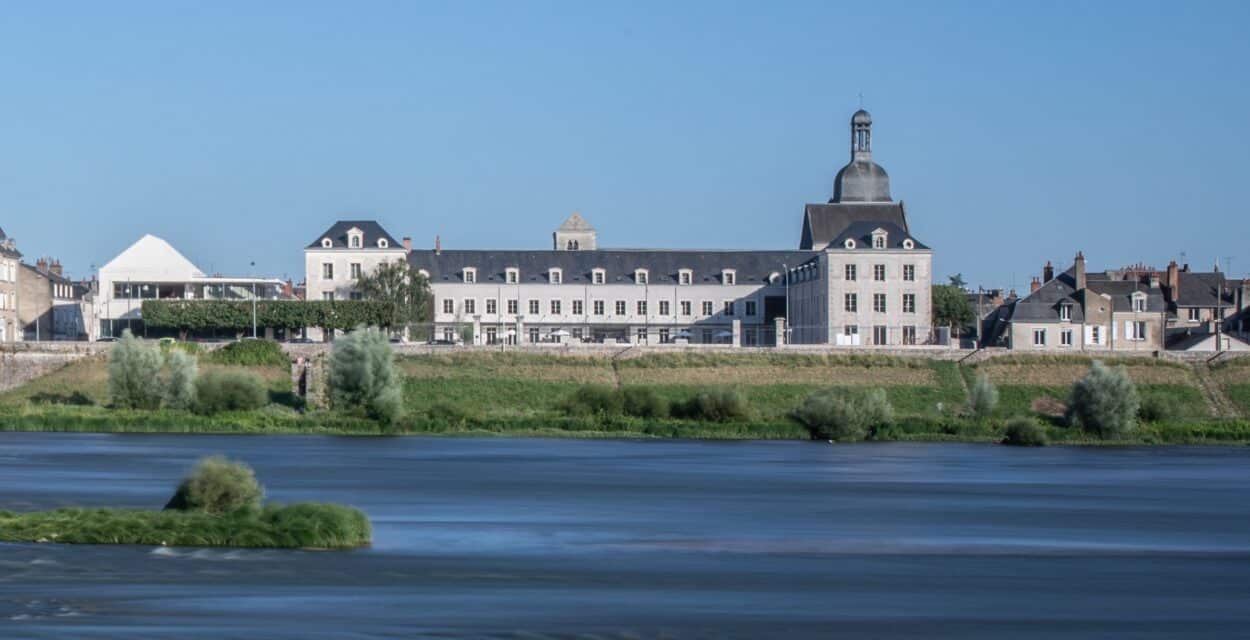Chef Christophe Hay transformed a 17th-century building, constructed on the orders of the brother of King Louis XIII, into Fleur de Loire, a hotel with two restaurants and a spa. The Fleur de Loire exemplifies how eco-friendly methods can become the norm in hospitality.
Castle after castle, the Loire Valley continues to reveal history through elegant and breathtaking architecture. For centuries, the castles belonged to royalty and were rarely, if ever, visited by commoners. Among the preferred castles during the Renaissance period, the kings of France enjoyed residing in the Château de Blois where a total of 7 kings and 10 queens lived, making it a hub of monarchic power and an essential location in the history of France.
In the city of Blois, located between Orléans and Tours, Gaston d’Orléans, son of Henri IV and brother of King Louis XIII, ordered the construction of a building in the 17th century. This building has since offered views of the historic city center of Blois, the famed castle of Blois and the admired landscape of the Loire with its wild river and natural resources.

Two-starred chef Christophe Hay, who earned the Chef of the Year 2021 award from the Gault & Millau guide, converted the 17th-century building previously used as a hospice into a beautiful hotel with two restaurants and a spa. He opened the Fleur de Loire on June 27, 2022. It has 44 rooms, of which 11 are suites, the Christophe Hay signature restaurant and the Amour Blanc restaurant, a pastry kiosk, a grocery store, a bar and the Sisley spa. Architect and interior designer Caroline Tissier completed the architectural renovation and decorative aspects of the project, collaborating with artisans such as Solène Eloy of Atelier du Mur and Karolänn Bapté of Jolie M Home.
“We worked on this project for two years. It was an intense job that required lengthy research in order to create unity within the building despite the differences between the existing spaces and angles. We managed to create this unity through partnerships I have with artisans such as Solène and Karolänn who have a notable savoir-faire,” Caroline Tissier said during a conference at EquipHotel.
Her work on Fleur de Loire embodies the third collaboration between herself and Christophe Hay, who had previously initiated two restaurant projects in the area. Through these three enterprises, Hay reveals his desire to feature the most noteworthy elements of his native region: the Loire.

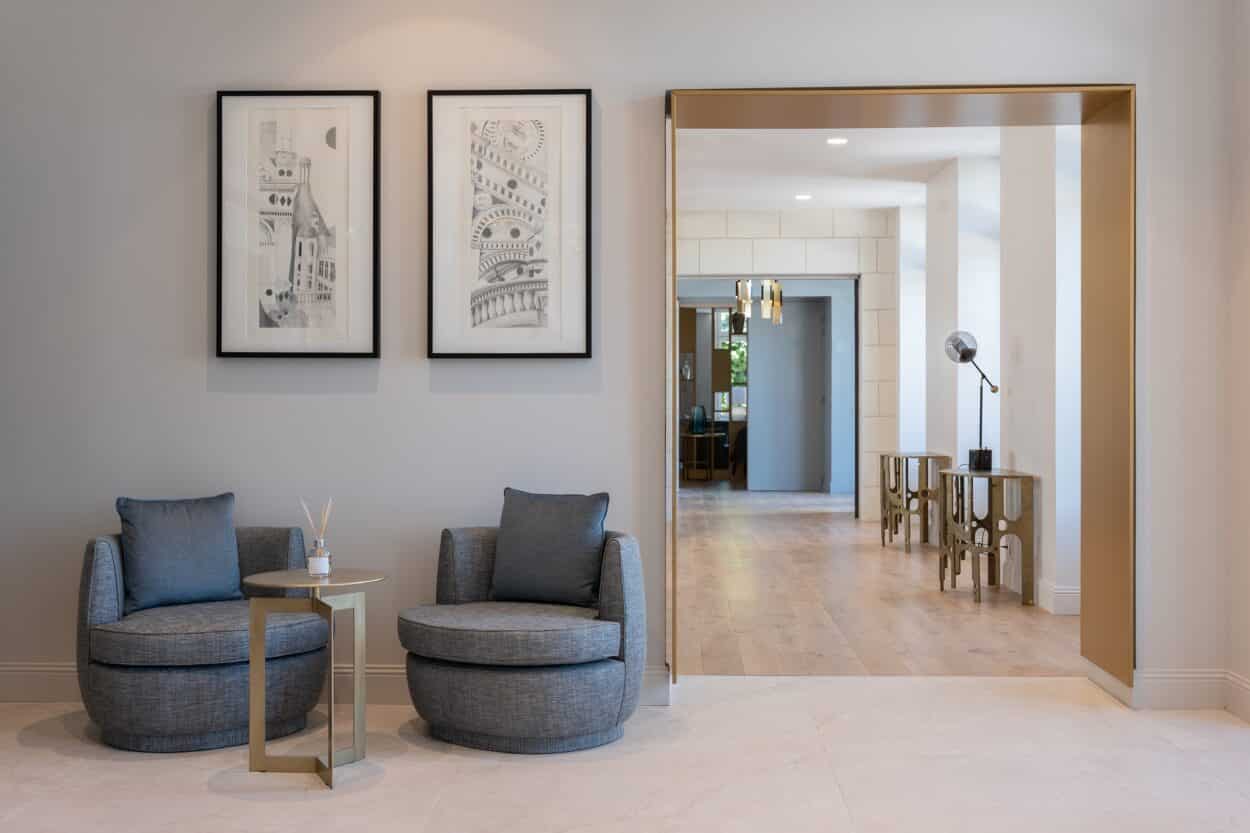

Since the early stages of the Fleur de Loire project, Christophe Hay aimed to create this place in an eco-responsible and sustainable way. He focused on the use of natural products and materials, the prevention and management of waste, the limitation of energy use and the recovery of rainwater. The team involved in the project studied every detail of the project. They implemented a closed-loop HVAC system to avoid losses of electricity and the use of heat pumps for energy-intensive heat. They banned heaters and outdoor air conditioning units from the project. In order to recover rainwater, two water pockets are located in reserves in the cellar and allow the groundskeepers to water the gardens of Fleur de Loire. All the bulbs are LEDs and the energy of the building is entirely from wind power.
In regards to the bedrooms, a local soap factory produces the shower gel, shampoo and conditioner. The artisans use elements from the Loire Valley such as Guénard oils, Martin-Pouret vinegar and honey from the Fleur de Loire garden. The rooms have recycling bins, the room keys are made of wood and the furniture is made using wood from properly managed forests with eco-certifications such as FSC and PEFC.


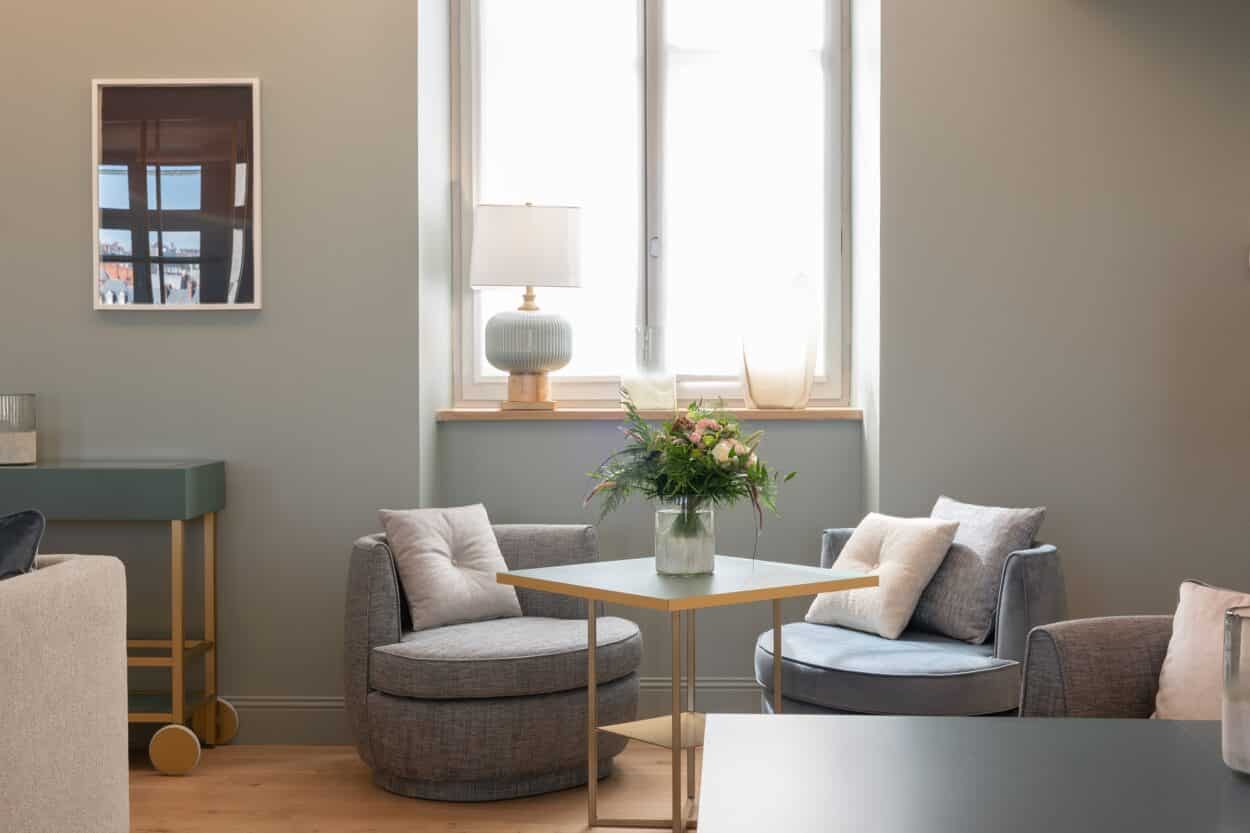
The Ecological Kitchen of Tomorrow
Kitchen appliances and machines, such as the oven and dishwasher, are powered by renewable energies—from wind power—and consume very little water and electricity. The staff sort and process waste using compost and selective collection. In order to limit his use of plastics, the chef uses biodegradable vacuum bags.
Fleur de Loire relies on Green Care Professionnel (Werner & Mertz) which strives to develop products that respect the environment. The kitchens of the two Fleur de Loire restaurants are entirely designed in an ecological way, in partnership with the Enodis brand. In line with putting the environment at the forefront of the project, the chef invested in 1.5ha of land around the building and has since become chef-farmer.
Although the bank of Blois-Vienne was historically made up of agricultural lands for vegetables and fruits, it’s no longer the case. In partnership with the Seed Conservatory, Christophe Hay and his teams are developing an asparagus conservatory with 50 referenced varieties, in order to revive the agricultural lands of the Val de Blois, and an apple conservatory with the reimplantation of an ancient variety, the rose apple. The chef’s objective is to revive, in the heart of downtown Blois, these local products.
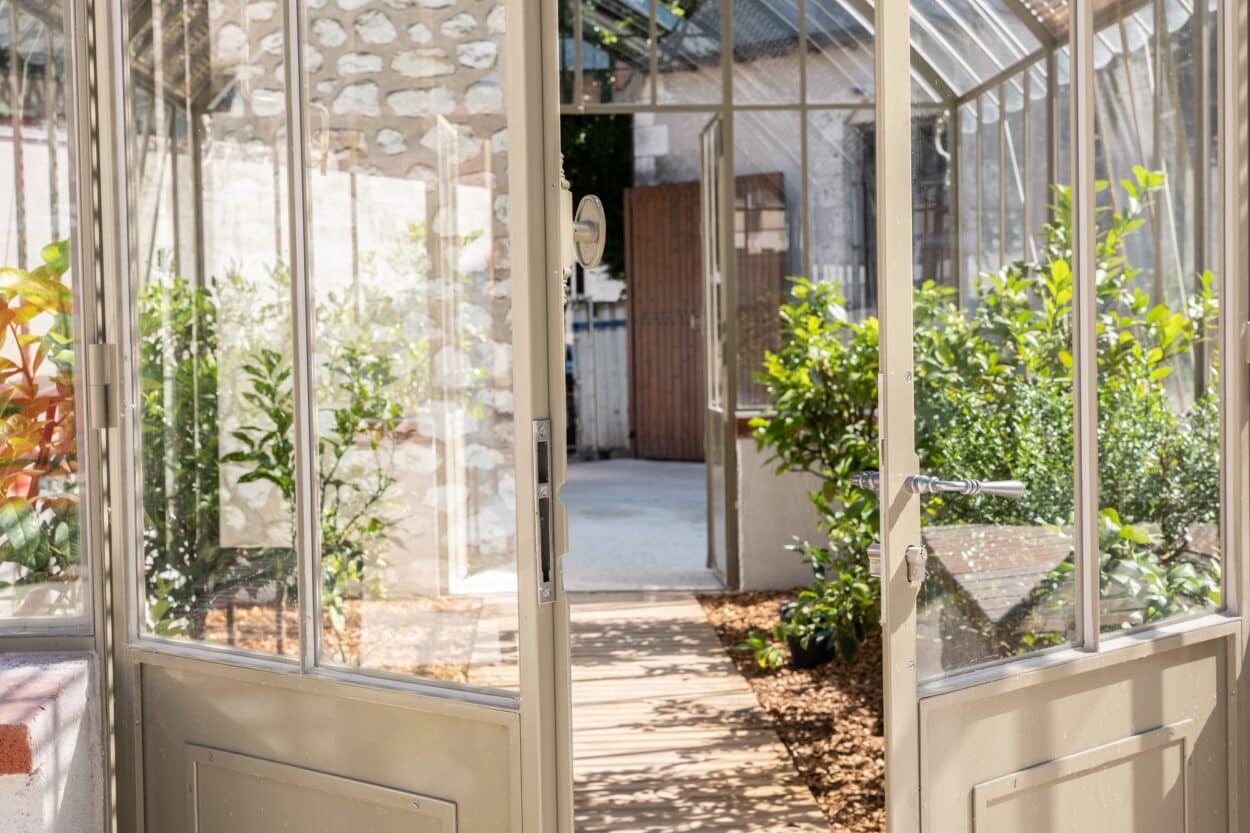

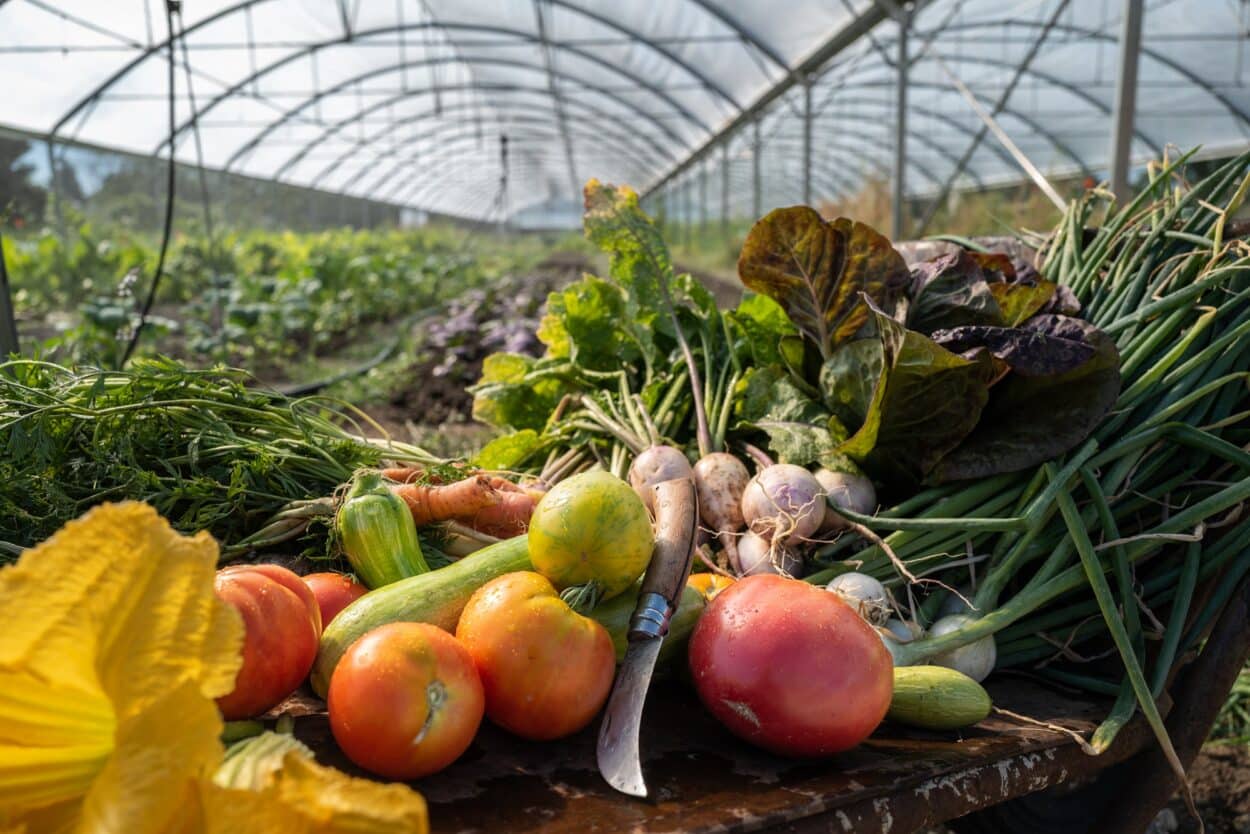

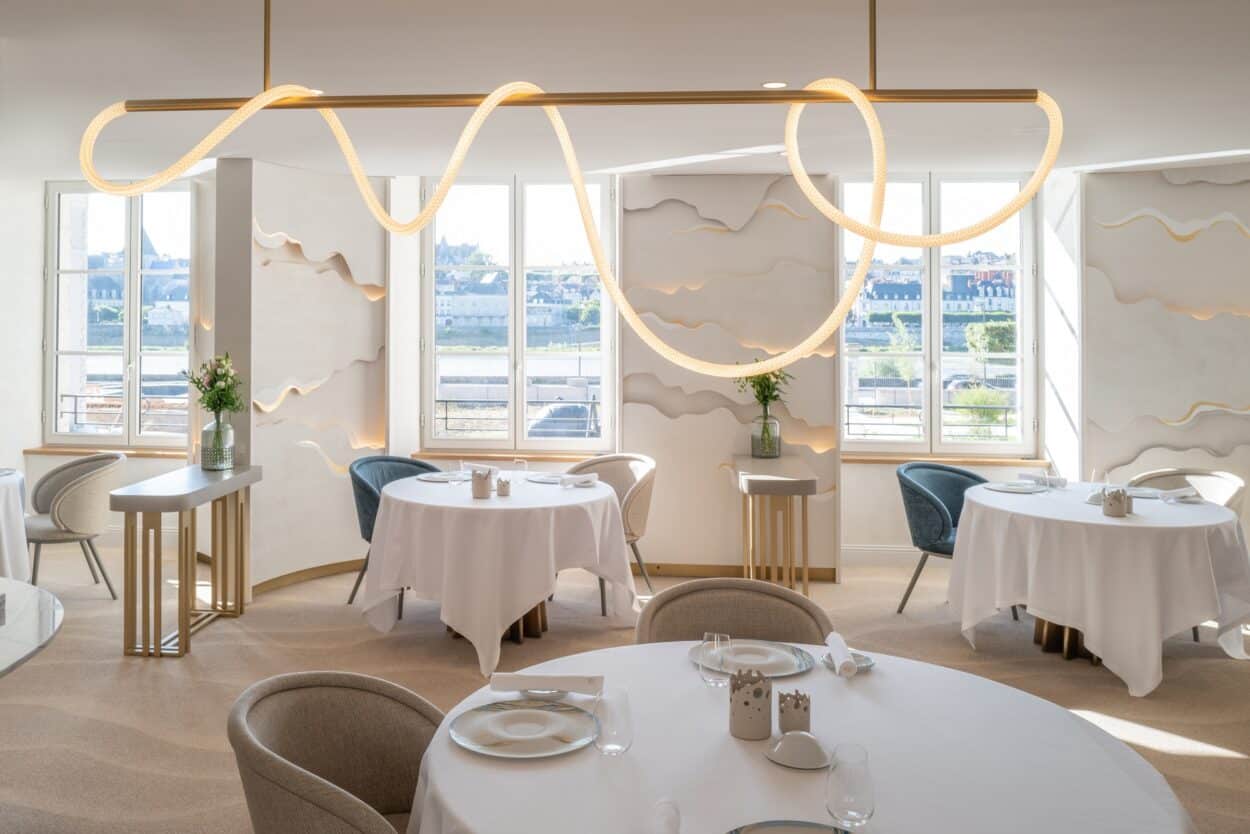
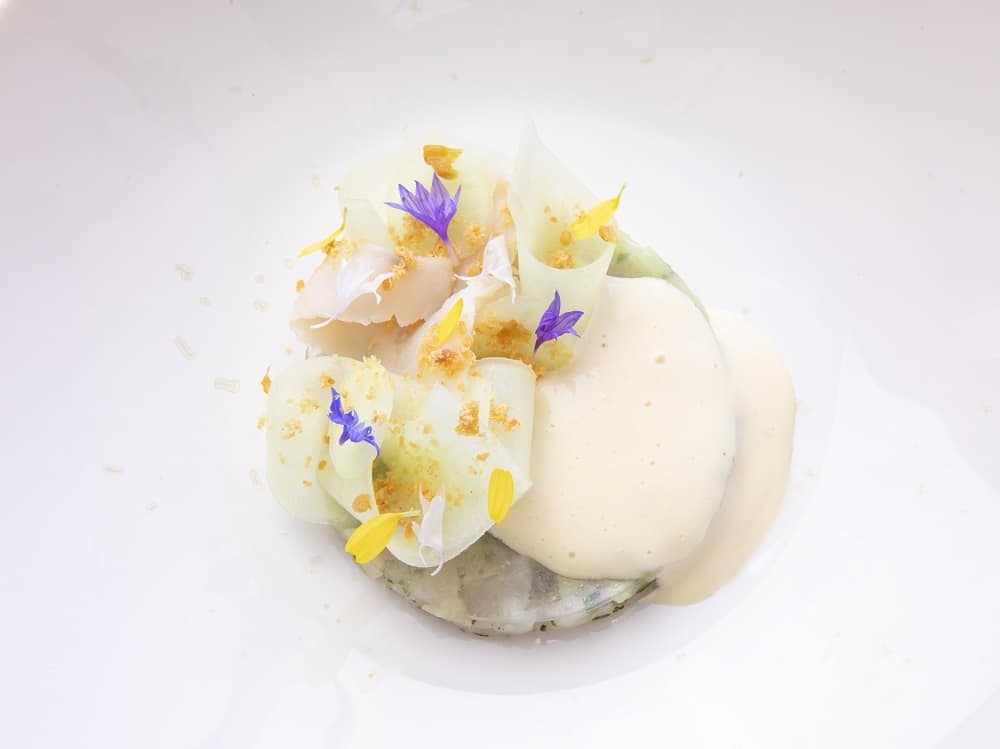
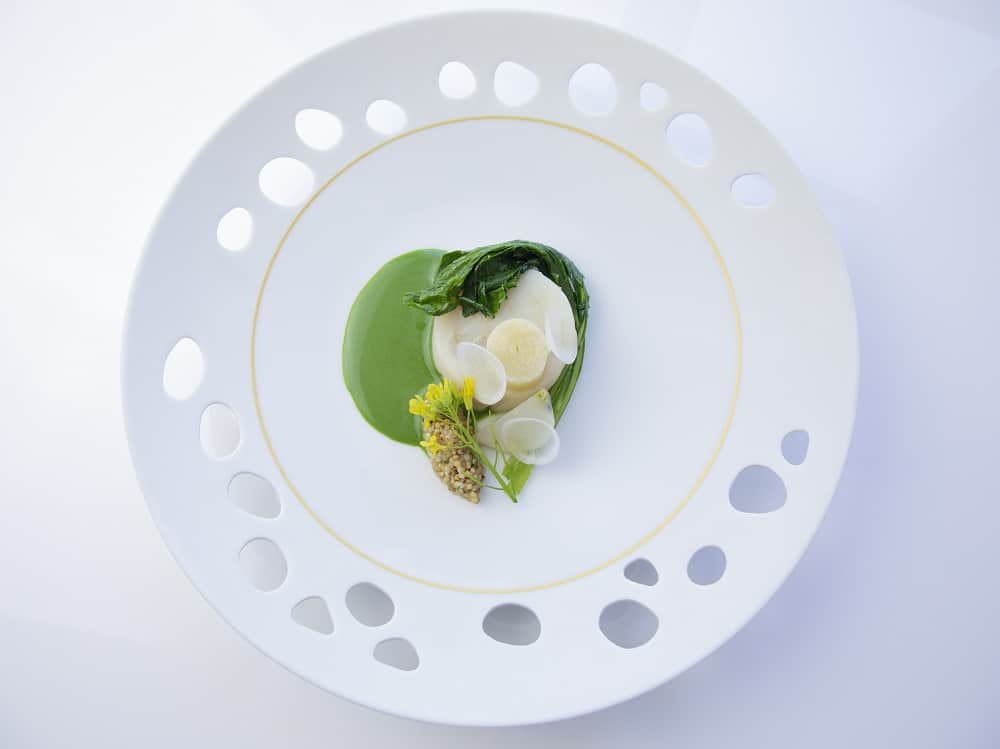
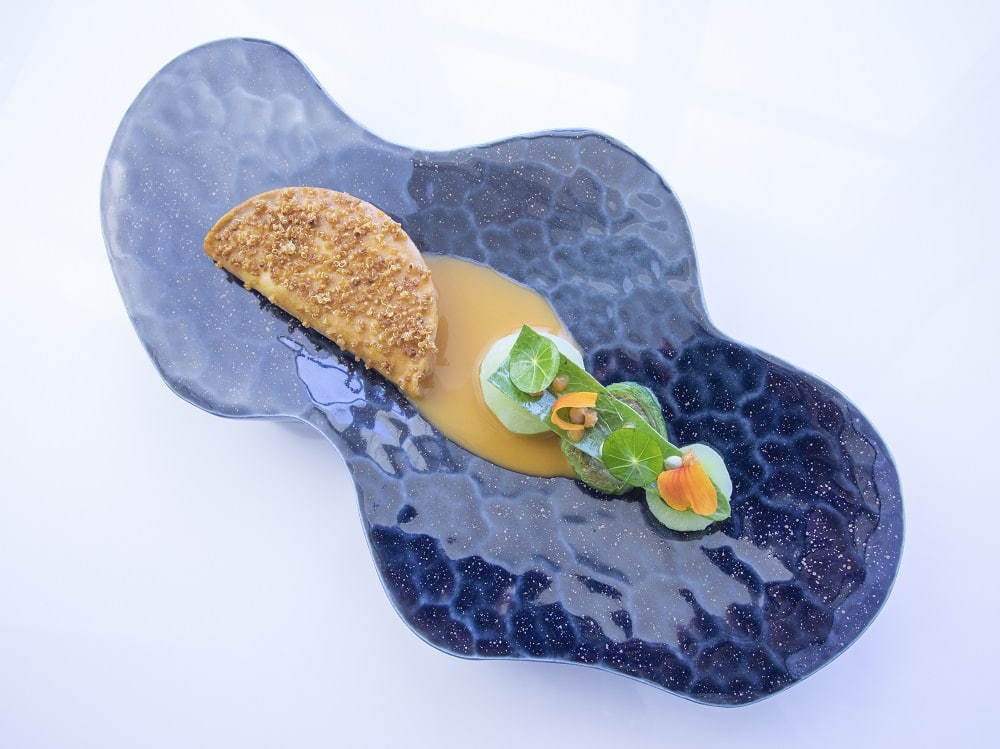



A Name Synonymous with the Interior Design of Michelin-Starred Restaurants: Caroline Tissier
Although Caroline Tissier didn’t begin her career as a designer for hotels and restaurants, she found herself immersed in the hospitality industry when she opened a restaurant with starred chef Akrame Benallal. She’d previously done some work on restaurants, but her involvement in this project, as the architect and part owner, left the door wide open to the specific niche of restaurants launched by Michelin-starred chefs. She has since conceived the layout of several restaurants of great starred chefs in Paris: David Toutain, Akrame Benallal, Thibault Sombardier.
“It gave me the opportunity to think differently about decor. I realized that’s what I loved: being in this environment—of gastronomic cuisine, of quality chefs. Little by little, very naturally, I got into this field, and they began calling me. In fact, it’s a small group. The chefs all know each other,” Caroline Tissier said in an interview with ArchiExpo e-Magazine following the conference she held on Sunday, November 6, 2022, at EquipHotel.
Her professional relationship with Akrame Benallal grew from having designed and built custom furniture for his previous restaurants while wearing another hat, that of Contract Factory, a company she founded with Alexis Maréchal. As for Christoph Hay, Caroline Tissier met him when he was still in Paris, looking for an architect who could accompany him in his quest to open restaurants in his native region, the Loire, quite specifically in Blois where he studied at the hotel school LHT, Lycée des métiers d’Hôtellerie et de Tourisme Val de Loire.
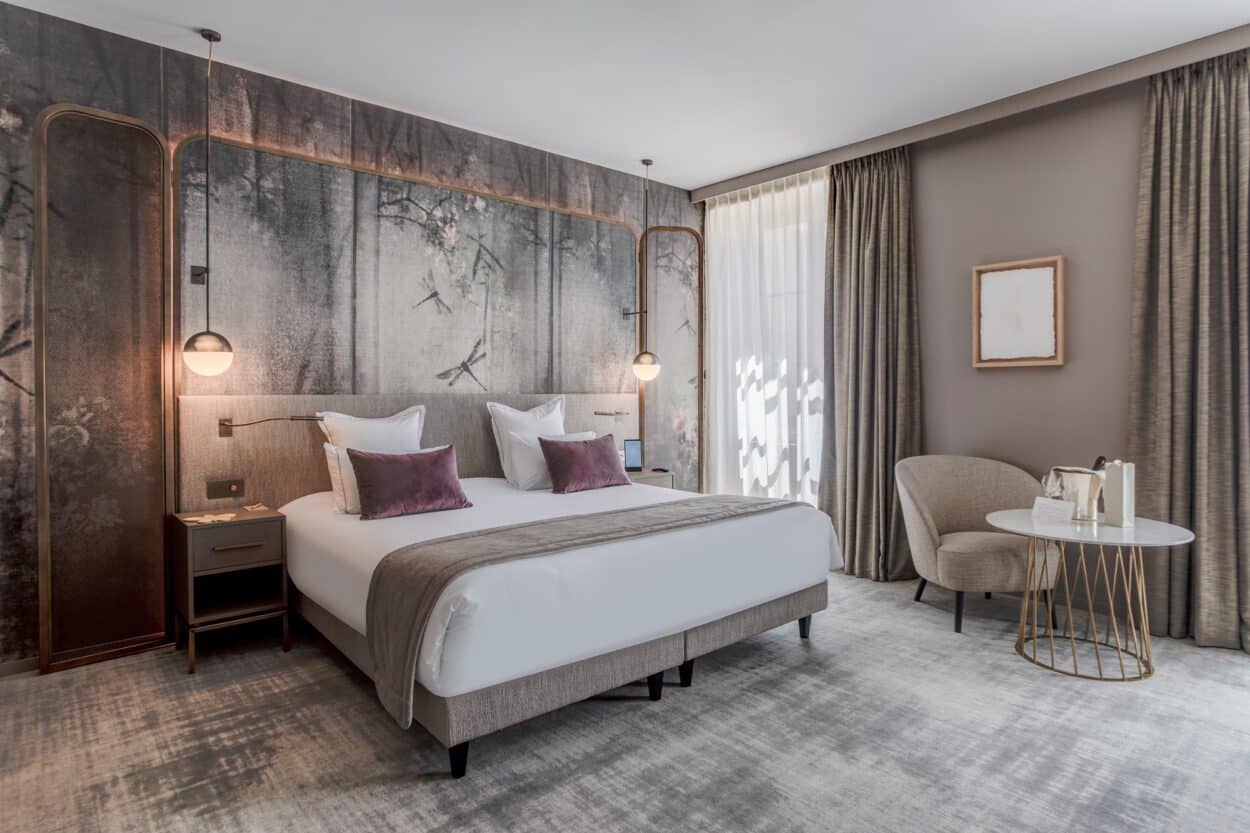

“There aren’t that many architects and designers specialized in this niche, whereas I’ve really become specialized. I think that’s what pleases the chefs, notably Christophe Hay. When he was ready to return to his region and open his first establishment, he called me.”
Having completed the Bistrot d’à Coté and the Table d’à Coté for the chef some time ago, Caroline Tissier has now concluded her work on Fleur de Loire. While it’s the first hotel-restaurant combo for the chef, Caroline Tissier had previously handled several family hotel projects, gaining experience in this area. Although the scale is much larger, the hotel of the Fleur de Loire remains a very unique venture.
